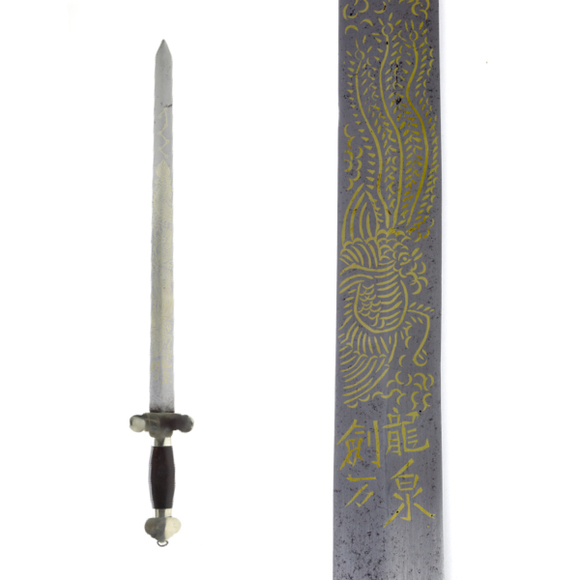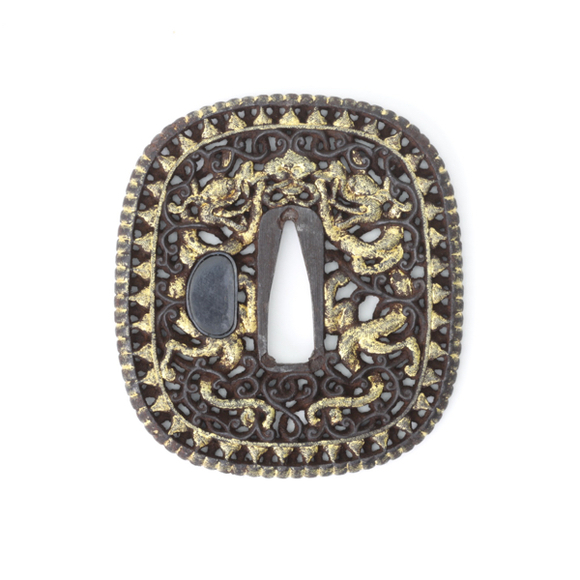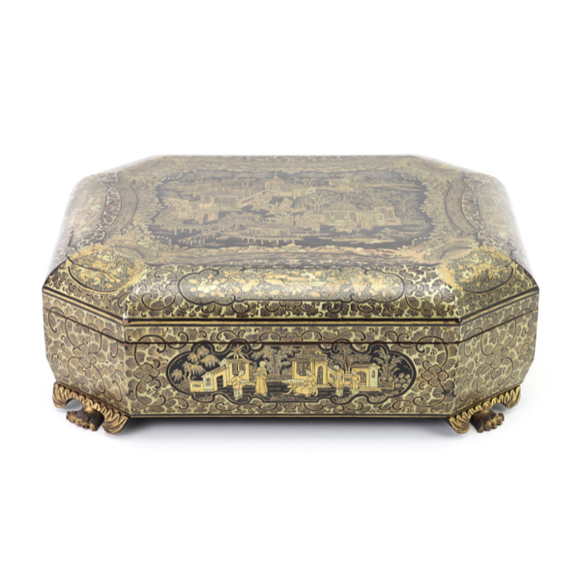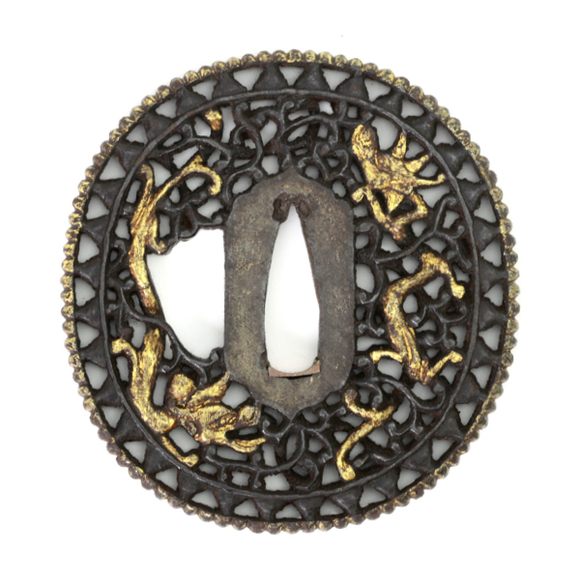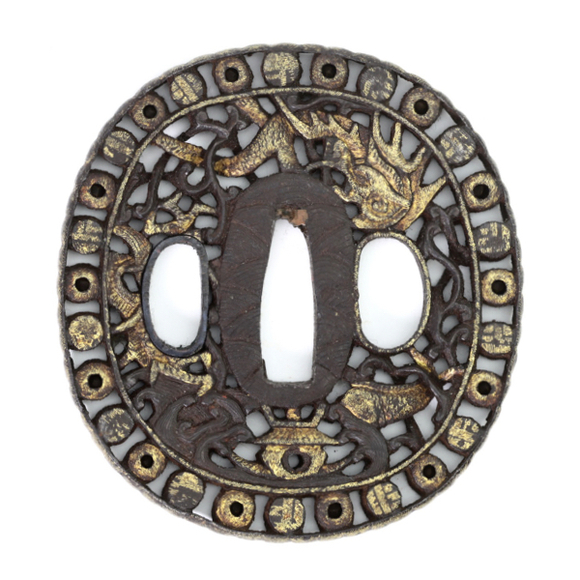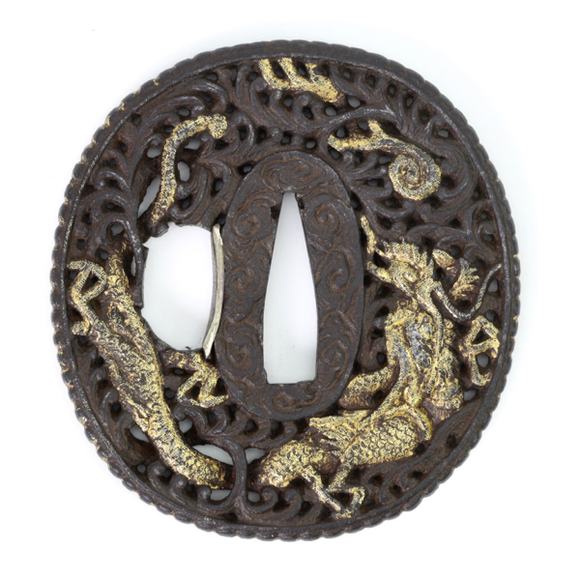A Chinese shortsword made by a well-known Longquan maker.

Left 58.4 cm
Right 58.3 cm
Left 47 cm
Right 46.9 cm
Left 14, 10.5, 5 mm
Right 13.5, 10, 5.5 mm
(Base, middle, 5cm from tip)
Left 37, 26, 13.5 mm
Right 36, 25.5, 13 mm
(Base, middle, 5cm from tip)
Left 711 grams
Right 684 grams
Left 10.5 cm from guard
Right 10.8 cm from guard
Iron, steel, brass, hardwood, leather
Southern China
Circa 1850s-1880s
From a USA based collector
This set was sold in 2021.
Introduction
Húdiédāo (蝴蝶刀), are a type of double swords that originated in or around the port cities of southern China. They are known in the local Cantonese dialect as bat jam do or "eight cutting knives". (八斬刀, pronounced bāzhǎndāo in Mandarin) The type seems to have emerged in the mid 19th century, as a merging of typical Chinese fighting knife blades with handles inspired by western naval sabers and entering knives. They typically have half-hilts that fit in a single scabbard side-by-side and can be drawn as if they were one weapon.
For more information, see my glossary article: Húdiédāo (蝴蝶刀).
This set
A nice pair of the narrow military-style butterfly swords. They have the massive blades so typical for this genre, with thick triangular cross-section base, narrowing down to a sharp point with a long back bevel. The blades are of good quality laminated steel, forged without any forging flaws. Cloudy effects of the heat treatment can be seen here and there.
The half-hilts come with a sturdy iron D-guard with a hook at the back. The ferrules are made of brass. The wooden grips are simple but elegantly carved with oblique grooves, creating a lozenge pattern when the swords are paired.
They come in a sturdy leather scabbard.
Markings
Both swords carry markings, chiseled into the blades. Faded on one side, but clearly legible on the other:

同勝一百三十七号
Tóngshèng yībǎi sānshíqī hào
"Together Victorious No. 137"
Tóngshèng (同勝) meaning "Together Victorious" does not appear in lists of Green Standard Army units that I am aware of. It does remind a bit of the Chángshèng jūn (常勝軍) or "Ever Victorious Army" that was active fighting the Taipings from 1860-1864. Today the name Tóngshèng is still used for shops which leads me to believe that it was probably the name of one of the militia groups or a private security firms that protected assets in southern China, mainly the port cities.
Marked húdiédāo are extremely rare. I have only owned two in my career so far, and have kept one of them. They were from the same line, with near identical markings save for the numbers. Both single pieces with a round handle, that were probably used together with a shield.


The marking on mine says:
廣字一百三十八号
Guǎng zì yībǎi sānshíbā hào
"Guang-series No 138"
同治三年発
Tóngzhì sān nián fā
"Issued in the 3rd year of Tongzhi" 1864.
Guǎng (廣) is the first character of Guangdong province as well as that of Guangzhou, its capital city. (Formerly known as Canton in English writing.)
Condition
In very good condition with no notable damage. Some minor dings in the edges. Some scratches in the (new) polish due to the pieces sitting in a scabbard together. Some dents to the brass ferrules. The tight scabbard has shrunk over time, preventing the swords to go all in to the hilts.
Conclusion
A nice, quality set of the narrow variety of these swords. Markings on these are extremely rare so it is exciting to find another set with a serial number marking. I hope one day we can shine more light on what Tóngshèng stands for on this set.



















A nice example with unusually fine lacquerwork and a monogram in the lid.
Canton work for the Japanese market, with 28 metal balls in separate compartments.

